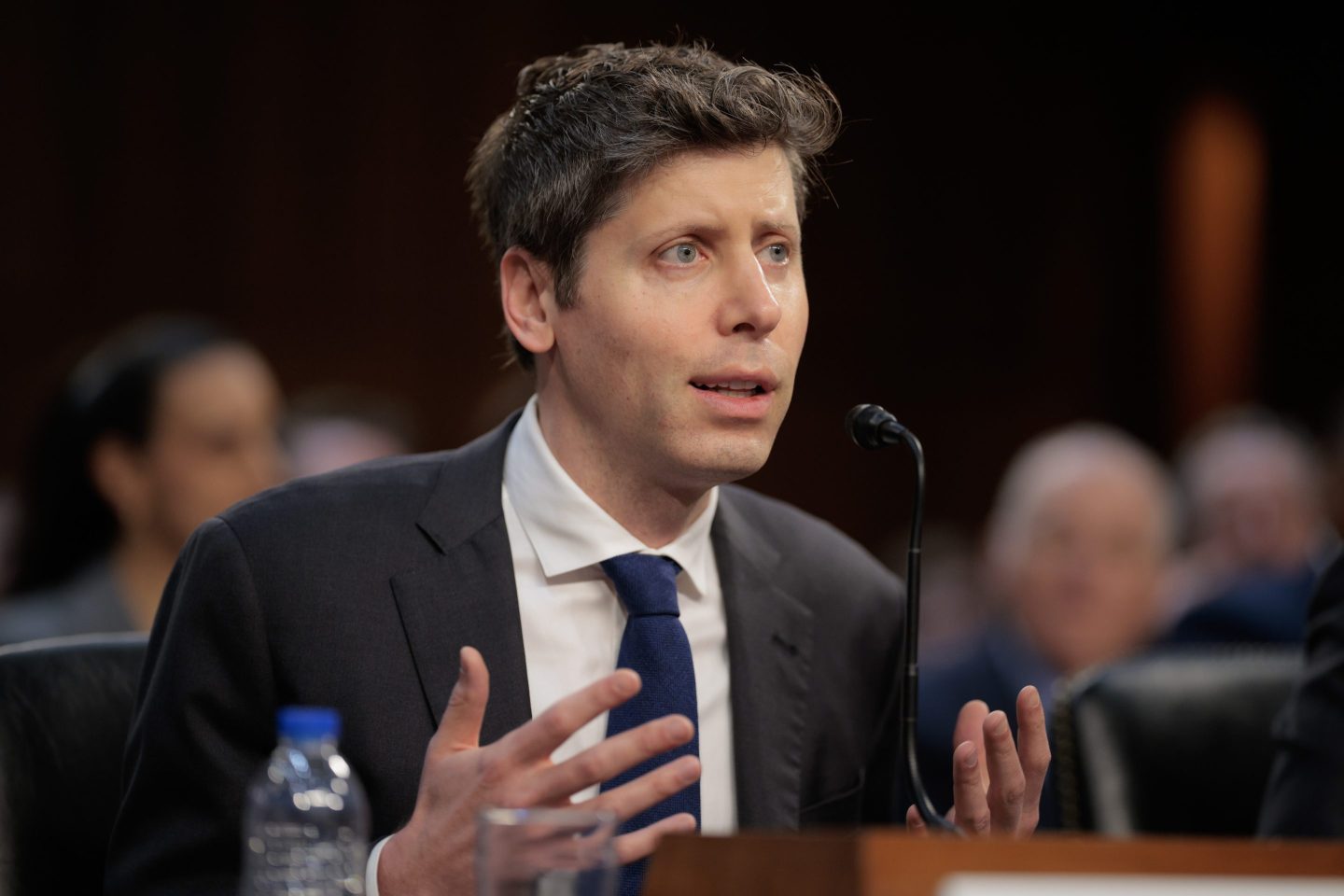Like investors, the Trump administration appears to have been blindsided by buzzy Chinese AI company DeepSeek and its extraordinarily cheap models, which threaten to upend the economics of the U.S.-dominated sector.
On Monday, as DeepSeek’s recently introduced innovations wiped over $1 trillion off the value of U.S. stocks, and just days after announcing a privately funded $500 billion AI infrastructure push, President Donald Trump said DeepSeek’s rise was “a wake-up call for our industries that we should be laser-focused on competing to win.”
Echoing that truism, U.S. AI czar David Sacks tweeted that DeepSeek’s R1 model “shows that the AI race will be very competitive.”
“I’m confident in the U.S., but we can’t be complacent,” the venture capitalist added.
Sacks also claimed that the moment proved Trump had been right to rescind President Joe Biden’s rules on AI safety, which Sacks believes held back U.S. companies when China didn’t impose similar restrictions. In fact, China has recently adopted extensive safety regulations for AI companies.
The U.S. government’s reactions shed little light on its plans to ensure U.S. superiority in the AI race. But nobody expects the Trump administration to take its foot off the gas.
“In the near term, DeepSeek’s achievement is likely to pressure the U.S. into increased support for domestic AI development, most likely leading to increased federal investment in AI research and infrastructure,” wrote Raymond James analyst Ed Mills in a Monday note.
Meanwhile, University of Oxford political science professor Ben Ansell wrote in a blog post: “There is no way that Donald Trump will want to be perceived to have lost America’s AI edge. If the tech billionaires are as important as they think they are, they will convince Trump that this is existential for the U.S. and the scale of investment will get ever and ever bigger.”
Investing wisely
However, experts say uncertainties about what DeepSeek actually achieved make it difficult to judge whether it’s still wise to continue plowing vast amounts of money into AI infrastructure.
DeepSeek said it trained its R1 model, released in December, for less than $6 million—a fraction of what OpenAI and its peers have spent on their latest models. But that figure does not include the costs of the research and experimentation that got it to that point. Some also suspect that DeepSeek had access to large quantities of Nvidia’s most cutting-edge chips despite claiming that it made do with the company’s less-powerful offerings, which face no U.S. export controls.
“Right now the market selloff is a function of people thinking you can be a fast follower and capture a lot of the gains,” said Robert Trager, codirector of the Oxford Martin AI Governance Initiative, at Oxford University. “In that case, the order-of-magnitude higher multiple [on infrastructural investment] that you need to be at the frontier just isn’t worth it. But we really don’t know the answer to that.”
Even if DeepSeek has achieved the efficiency gains that it claims and others continue to iterate on its advances, efficiency improvements will likely hit a wall at some point, warned Itamar Friedman, CEO of Israeli code-generation startup Qodo and a former director of machine vision at China’s Alibaba Group.
“Eventually there would be that point where, if you want more work to be done, you will need to have that scale,” said Friedman.
However, he also said the Trump administration would do well to invest in smaller companies and academia, now that it appears massive clusters of cutting-edge AI chips are not as necessary for leading research as they seemed just weeks ago. Collaboration-friendly open-source AI models can produce results as impressive as proprietary alternatives from the likes of OpenAI and Anthropic, he added.
Tariffs and export controls
Also on Monday, President Trump threatened to levy new tariffs on chips imported from Taiwan, the center of the global semiconductor industry. Like his predecessor, Trump wants to return chip manufacturing to the U.S. But while Biden opted to offer manufacturers a carrot in the form of billions of dollars in CHIPS Act subsidies, Trump’s approach is more stick: If chipmakers don’t set up shop in the U.S., they will be hit with tariffs. He suggested Monday that he might hit Taiwan with chip tariffs as high as 100%.
At the same time, the Trump administration wants to stimulate U.S. AI development—as exemplified by last week’s announcement of the $500 billion Stargate project, a plan involving several companies to build data centers that largely hinges on buying vast quantities of Nvidia chips to boost OpenAI’s capacity. Like many other companies, Nvidia relies on Taiwan Semiconductor Manufacturing Co. to make its chips. TSMC is set to start production at a new Arizona plant this year, but it won’t use as advanced a manufacturing process as the company’s newest Taiwanese facilities.
Trump’s onshoring tactic and AI drive “are in clear tension,” said Trager. “If you’re going to put a tariff of 100% on chips coming into the U.S., it’s going to make it much more expensive to build out these data centers [using the latest chips]. If that’s your means of incentivizing production in the U.S., that’s an expensive means in the short run, fundamentally.”
Trager said he expects the White House to maintain export controls on the most powerful AI chips from U.S. companies, particularly after DeepSeek admitted that access to chips was its biggest bottleneck.
Biden introduced the controls and stepped them up just before leaving office, with a so-called diffusion rule that will limit how many advanced U.S. AI chips most countries can obtain, to close off potential gray-market routes into China. Trager said it wasn’t yet clear what Trump would do with this policy, but he would probably favor it because it gives the U.S. leverage in countries that want to have their import caps raised.
“They will be asking countries around the world to choose between” the U.S. and Chinese AI ecosystems, Trager said.
Some have suggested that DeepSeek’s success shows the futility of export controls, as, if anything, they just force China’s AI sector to innovate. However, Sam Bresnick, a research fellow at Georgetown University’s Center for Security and Emerging Technology, noted that it could take another year or two for Biden’s export controls to really bite in China. So far they have only reduced China’s training capacity by 10% to 15%, he noted, but the capacity gap would naturally grow as more clusters of the latest chips are deployed in the U.S.
“There’s not much you can do other than to wait it out here,” he said about judging the true effectiveness of the export controls.
Bresnick highlighted the compliment extended to DeepSeek by Trump and his ally, venture capitalist Marc Andreessen. The president said DeepSeek’s innovations were “good because you don’t have to spend as much money,” which Andreessen agreed with—but added that the national-security side of the government still hasn’t weighed in on China suddenly having an international hit AI service.
“I guarantee you, the response to DeepSeek from the natsec folks is not as positive as it is from those who are interested in the technology itself,” Bresnick said.












